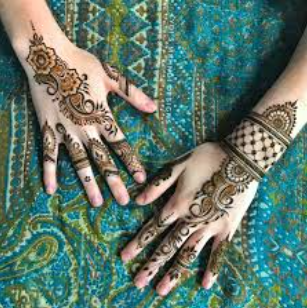The Beauty and Tradition of Henna: A Timeless Art Form

Henna, also known as mehndi, is an ancient art that has been celebrated for centuries across cultures and continents. Made from the leaves of the henna plant (Lawsonia inermis), this natural dye is used to adorn the skin with beautiful, intricate designs. From weddings and festivals to modern body art, henna symbolizes beauty, tradition, and celebration.
The History and Cultural Significance of Henna
Henna has a rich history that dates back over 5,000 years. It originated in regions like India, North Africa, and the Middle East, where it was not only used for body art but also for its cooling and medicinal properties. In many cultures, henna symbolizes joy, love, and good fortune, making it a key element in weddings, religious ceremonies, and celebrations like Eid, Diwali, and Navratri.
In bridal traditions, henna is believed to bring luck and happiness to the newlyweds. The darker the henna stain, the deeper the love between the couple, as folklore suggests. Henna art has since transcended borders, becoming a beloved body art form worldwide.
Types of Henna Designs
Henna designs vary in style and complexity, catering to different preferences and occasions:
- Traditional Indian Designs: Known for their intricate patterns, these include paisleys, florals, peacocks, and detailed motifs that cover the hands and feet.
- Arabic Designs: Characterized by bold, flowing patterns with spaced-out elements, Arabic henna designs are minimalistic yet stunning.
- Moroccan Designs: Featuring geometric shapes, tribal patterns, and symmetry, Moroccan designs are simple yet elegant.
- Contemporary Henna Tattoos: Modern henna includes symbols, names, mandalas, and trendy motifs that cater to casual or personal preferences.
Benefits of Natural Henna
- Chemical-Free: Natural henna is free from harmful chemicals, making it safe for all skin types.
- Cooling Effect: Henna paste has a natural cooling property that soothes the skin.
- Temporary Body Art: Henna designs fade naturally over time, allowing you to experiment with different patterns without a permanent commitment.
Tips for a Perfect Henna Stain
- Allow the henna paste to dry for 6–8 hours.
- Apply a lemon and sugar mixture to enhance color.
- Avoid washing the area immediately after removing the paste.
Henna: A Timeless Expression of Beauty
Henna is more than body art — it’s a celebration of culture, tradition, and individuality. Whether you choose classic bridal henna, bold Arabic designs, or modern tattoos, henna allows you to express yourself beautifully and naturally.
Comments
Post a Comment